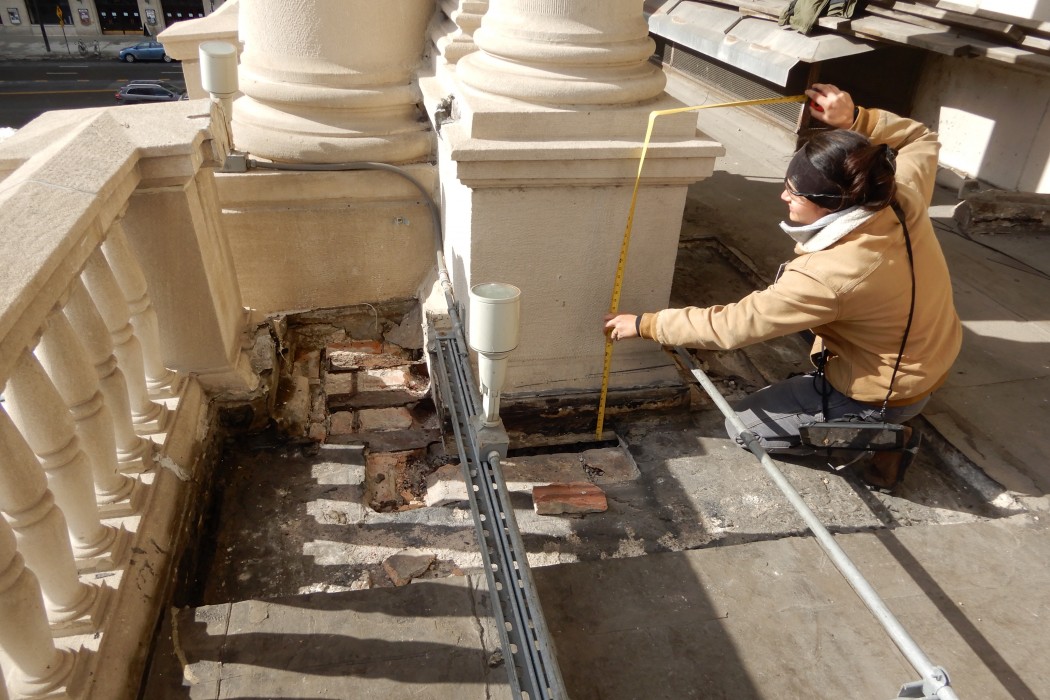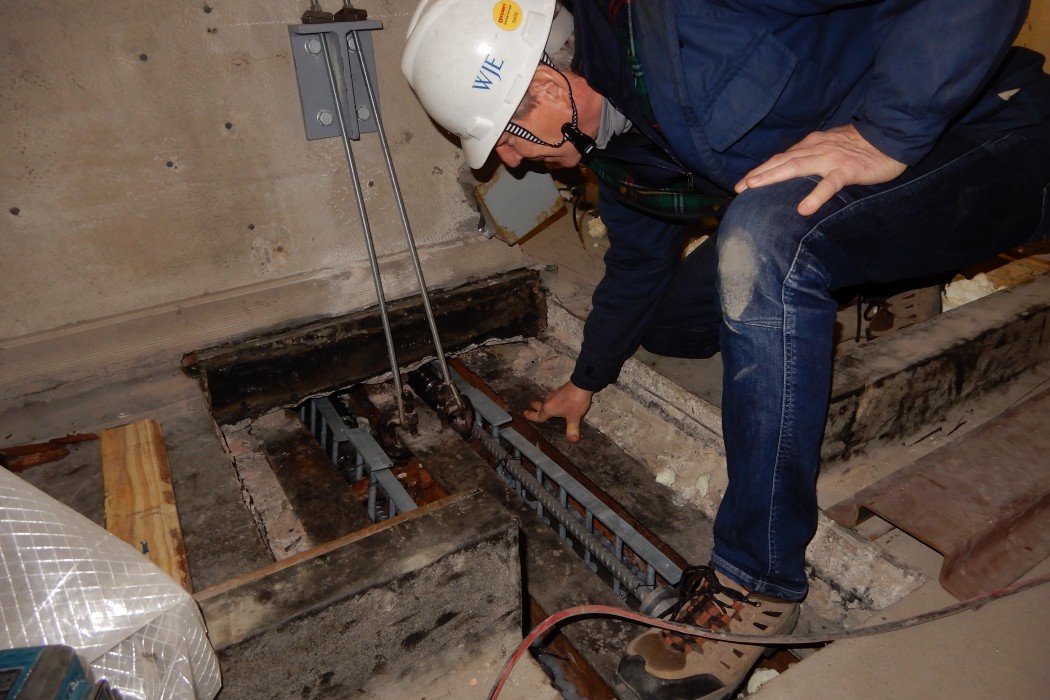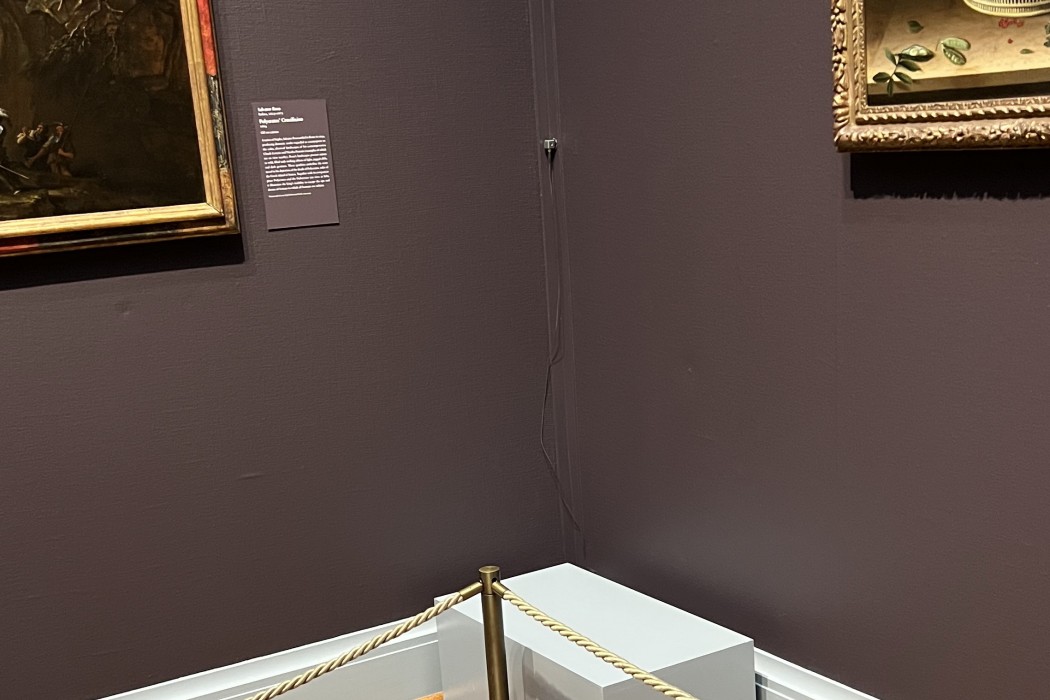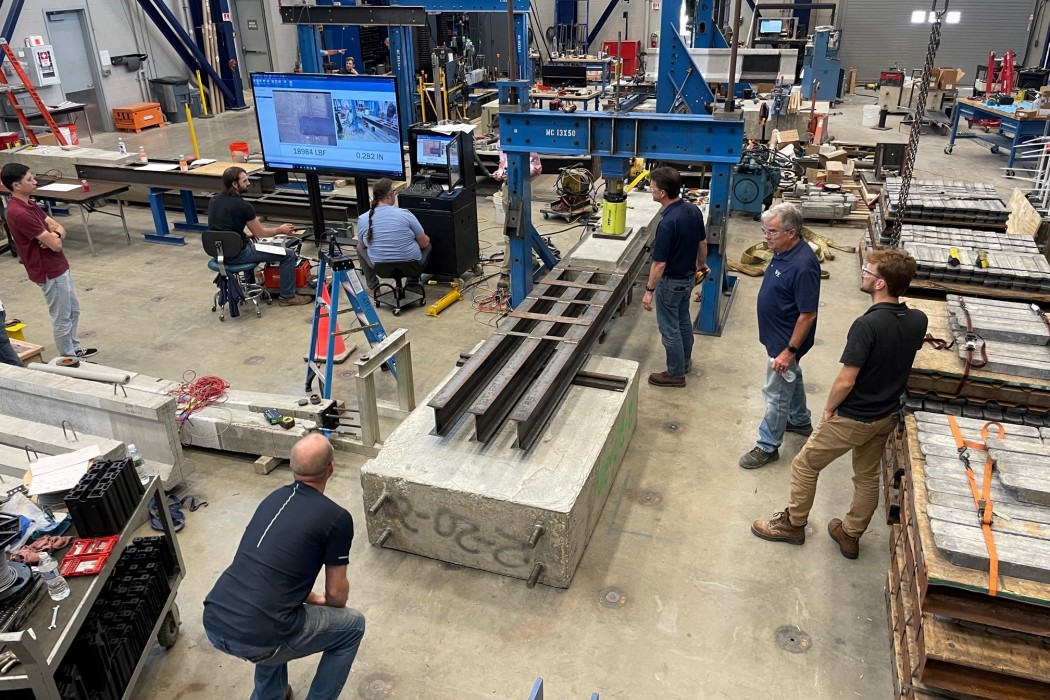WJE PROJECTS
Art Institute of Chicago Loggias
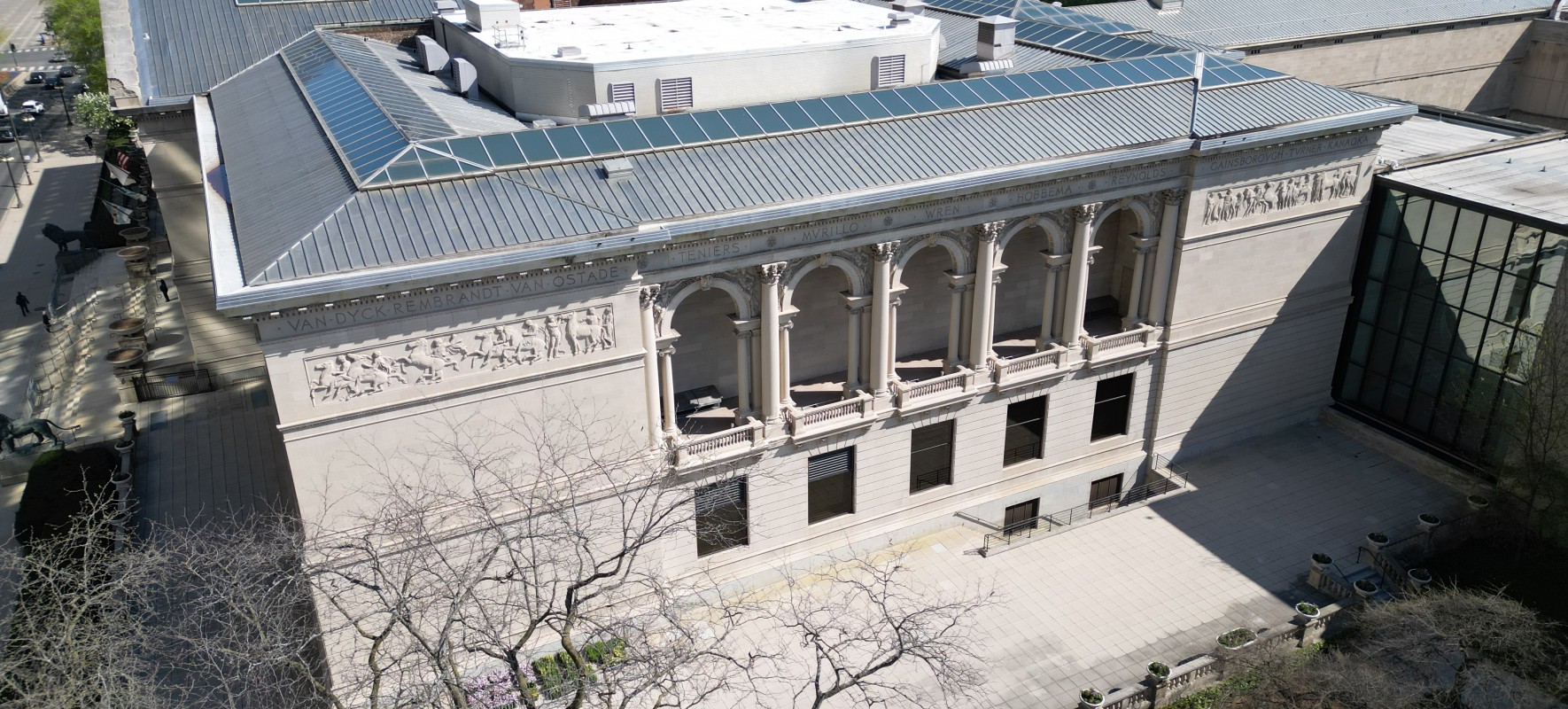

CLIENT |
The Art Institute of Chicago |
LOCATION |
Chicago, IL |
Restoration Design, Laboratory Testing, and Vibration Control
During stone balustrade maintenance at the south loggia, severe corrosion of underlying steel members was discovered. Archival review revealed the corroded elements were circa-1893 triple I-beams supporting a clay tile arch deck and stone facade. Field exploration found that corrosion and section loss from long-term water infiltration extended several feet from the ends of the beams through a heavily loaded region below a stone plinth. Severe corrosion and section loss were present at twenty total triple I-beam locations among the south and north loggias.
BACKGROUND
Constructed circa 1893, the original Michigan Avenue building of The Art Institute of Chicago boasts a classical Beaux-Arts design by Shepley, Rutan and Coolidge of Boston. The original structure consists of clay tile arch floors that span between early vintage steel beams, supported on load-bearing masonry walls, and founded on timber piles. The facades are mass masonry construction with limestone on the exterior. Loggias (inset balconies open on the exterior and enclosed on the inner three sides) exist along the north, south, and west elevations.
SOLUTION
After implementing elevation monitoring and provisional shoring, WJE developed structural repair options. The most straightforward required underside access. However, because the art galleries below the loggias would need to be closed and deinstalled to allow repairs from below, an innovative option was devised to repair from the topside only, thus saving the museum substantial disruption and associated costs.
The topside repair concept entailed removal of the clay tile between the corroded ends of the triple beams without allowing debris to fall into the gallery spaces below and without compromising the thrust in the clay tile arch. Afterward, new reinforced concrete was cast between the triple beams to strengthen them. Given its unusual nature, the repair was verified and refined through full-size mockups and load testing to failure.
To safeguard the nearby art collection areas from the vibrations caused by the repair construction, WJE performed vibration attenuation testing before construction by instrumenting the adjacent art collection areas and having the contractor perform trial construction activities under controlled conditions. Once vibration trials were successfully completed, vibrations monitors were installed and operated continuously during construction.
The innovative design devised by WJE ultimately saved the museum millions of dollars and substantial disruption to its facility. Careful vibration control procedures protected the museum collection during the repairs. The project received a 2024 Excellence in Structural Engineering Award from SEAOI.
RELATED INFORMATION
-
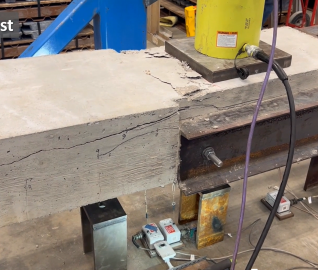 Learn about WJE's innovative structural repair approach and laboratory testing regime that... MORE >Videos | Case Study: Art Institute of Chicago, Loggia Restorations
Learn about WJE's innovative structural repair approach and laboratory testing regime that... MORE >Videos | Case Study: Art Institute of Chicago, Loggia Restorations -
 Our professionals deliver practical repair and rehabilitation services that maximize the... MORE >Services | Repair and Rehabilitation
Our professionals deliver practical repair and rehabilitation services that maximize the... MORE >Services | Repair and Rehabilitation -
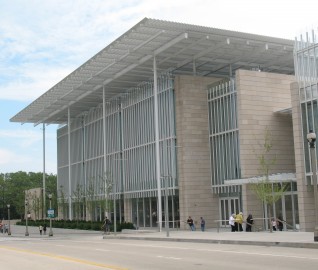 Vibration Control, Structural Peer Review, and Construction-Phase Services MORE >Projects | Art Institute of Chicago: Modern Wing
Vibration Control, Structural Peer Review, and Construction-Phase Services MORE >Projects | Art Institute of Chicago: Modern Wing -
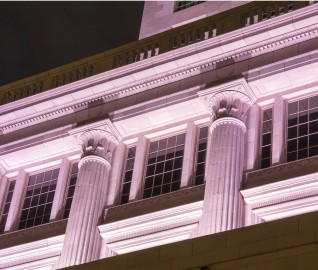 Our professionals balance the need to provide practical, long-term solutions with the ability to... MORE >Services | Historic Preservation
Our professionals balance the need to provide practical, long-term solutions with the ability to... MORE >Services | Historic Preservation



































